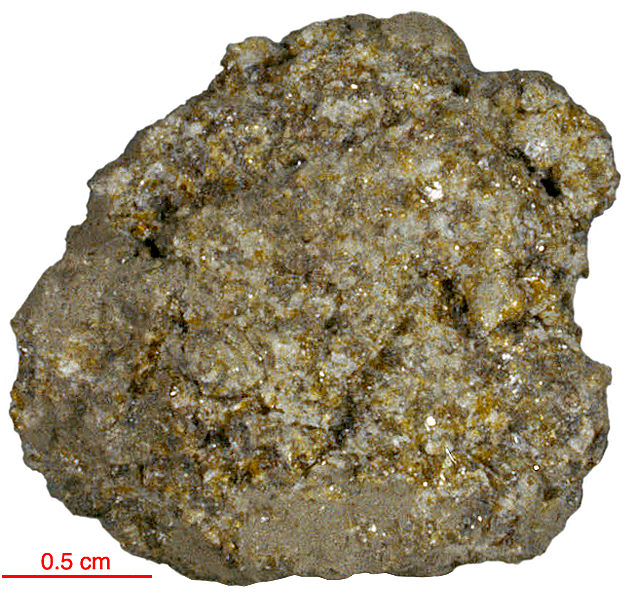
Fact sheet
15385 was collected as part of a rake sample and appears to be a cumulate enriched in early olivine crystals. It has abundant small, usually euhedral chromite grains. They often form clusters and are commonly present in early olivine, but also in the groundmass. Ulvospinel is subhedral to anhedral and is present in some of the later-formed major minerals, but mainly in the groundmass. Some ulvospinel-ilmenite intergrowths have been observed. Olivine grains are large and rounded with abundant chromite inclusions. Some have melt inclusions. Pyroxene grains are large and euhedral and may also be of cumulate origin. Metallic iron globules and troilite are also present in trace amounts.
The sample weighed 8.7 grams before analysis. It has not been dated.
Our sample has been gold coated for SEM analysis and although most gold has been cleaned off, some remains in fractures.
Further details of this and other Apollo samples are here: http://curator.jsc.nasa.gov/lunar/
The Apollo 15 landing site was in the Apennine Highlands, and close to Hadley Rille — a long, narrow winding valley. Approximately 76 kg of lunar material, including soil, rock, core-tube and deep-core samples, were returned to Earth.
This mission was the first flight of the Lunar Roving Vehicle which allowed the astronauts to venture further from the Lunar Module than in previous missions. During three periods of extravehicular activity, or EVA, on July 31st, and August 1st and 2nd, Scott and Irwin completed a record 18 hours, 37 minutes of exploration, travelling 17.5 miles, in the first car that humans had ever driven on the Moon.
Apollo 15 was launched on 26 July 1971.






